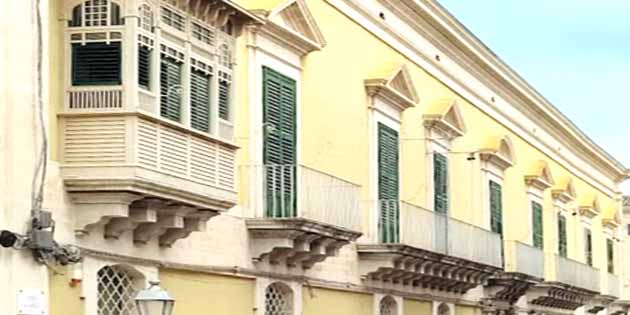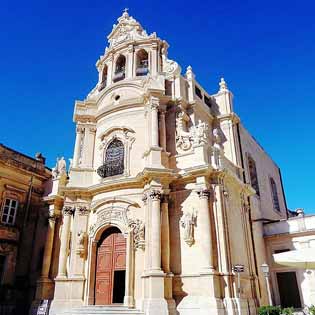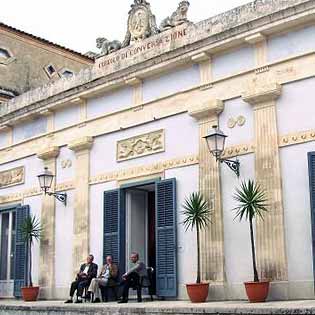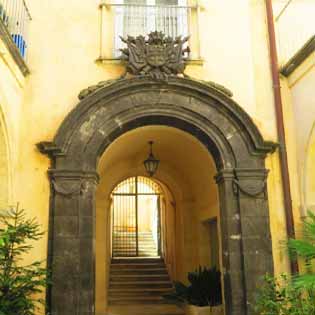Arezzo Palace di Donnafugata in Ragusa

The Palazzo Arezzo Donnafugata di Ragusa impresses with its majesty and great extension .
It was built at the end of the eighteenth century, at the behest of the Arezzo De Spuches family, barons of Donnafugatada, on pre-existing buildings razed to the ground by the earthquake of 1693, even if the final structure dates back to the first half of the last century.
It is a massive construction that encloses a large Italian garden. The simplicity of the ground floor is contrasted by the richness of the noble floor. On the facade that culminates with a beautiful cornice nine balconies with a triangular tympanum. Interesting is the last balcony on the left on which a well-modeled wooden loggia was created, a "jealousy" from which one could look without being seen.
Inside, a magnificent entrance hall with double colonnade precedes a courtyard and the large Italian garden with three basins and a cave where a nativity scene carved in limestone is inserted. From the internal courtyard you have access to the small theater, once a private entertainment venue for the baron and his guests. From the courtyard it was also possible to access the service rooms. The imposing marble staircase leads to the main floor where there are halls with limestone and worn pitch floors covered with floral patterned carpets, and walls covered with damask silk paper. The other wing of the building is intended for the sleeping area and, more detached, the area reserved for the servants and the caretaker's apartment.
The picture gallery created about the middle of the 'nineteenth century by Corrado Arezzo Spuches, deputy to the Sicilian parliament in 1848 and then senator of the Kingdom. Among the paintings preserved: the famous " Madonna with Child " attributed to Antonello da Messina, the " Chained Prometheus " of the Caravaggesque school, "San Paolo eremita" by Josè de Ribera called Lo Spagnoletto; the "Madonna Enthroned" by the Flemish Hans Memling; "Ecstasy of St. Francis" attributed to Bartolomeo Esteban Murillo; a self-portrait by Salvator Rosa and a canvas by Guerci. There are also Sevres porcelain, Japanese majolica, a collection of Caltagirone ceramics and other objects of considerable artistic value.


